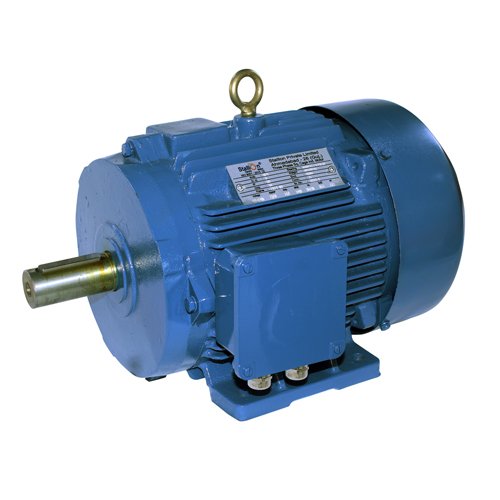Synchronous motor
Synchronous motor
Get a Quote For Synchronous motor
Synchronous motor Details :
Synchronous motors are a type of electric motor that operates at a constant speed and synchronizes with the frequency of the alternating current (AC) power supply. Unlike induction motors, which have a slight slip between the rotating magnetic field and the rotor's movement, synchronous motors maintain precise synchronization with the AC power supply frequency. This characteristic makes them useful in applications that require precise speed control and synchronization with other equipment or systems.
Here are some key features and characteristics of synchronous motors :
- Synchronization with AC Power: Synchronous motors maintain a fixed relationship between the rotor's rotation and the frequency of the AC power supply. The rotor rotates at a speed directly proportional to the supply frequency, typically in RPM (revolutions per minute).
- Applications Requiring Constant Speed: Synchronous motors are commonly used in applications where maintaining a constant speed is essential. Examples include applications in industrial automation, power generation, synchronous clocks, and certain types of machine tools.
- Types of Synchronous Motors :
- Non-Excited (Permanent Magnet) Synchronous Motors: These motors have permanent magnets in the rotor, providing the necessary magnetic field without the need for external excitation. They are energy-efficient and offer good speed control.
- Excited Synchronous Motors: These motors use electromagnets in the rotor, requiring a separate DC power source (excitation) to create the magnetic field. This type offers more precise control over speed and can be used in more complex applications.
- Non-Excited (Permanent Magnet) Synchronous Motors: These motors have permanent magnets in the rotor, providing the necessary magnetic field without the need for external excitation. They are energy-efficient and offer good speed control.
- High Efficiency and Power Factor: Synchronous motors typically have higher efficiency and power factor compared to induction motors. They are often used in power factor correction systems to improve the overall efficiency of the electrical system.
- Limited Starting Torque: Synchronous motors have low starting torque compared to induction motors. They usually require auxiliary devices to start them and bring them into synchronization with the power supply.
- Control and Regulation: Synchronous motors can be controlled using various methods, including adjusting the excitation current or using electronic controllers. This allows for precise speed control and synchronization.
- Applications :
- Power plants: Synchronous generators are used to generate electrical power at a constant frequency.
- Industrial automation: Synchronous motors are used in applications requiring accurate speed control, such as conveyor systems and robotics.
- Clocks: Synchronous motors are used in electric clocks to maintain accurate timekeeping.
- Power plants: Synchronous generators are used to generate electrical power at a constant frequency.
- Limitations: Synchronous motors are generally more complex and require additional control mechanisms compared to induction motors. They are also less suitable for applications requiring high starting torque.
Synchronous motors are valued for their ability to maintain precise speed and synchronization, making them suitable for applications where timing, coordination, and speed control are critical

